The universe is a vast and wondrous place, filled with mysteries that constantly challenge our understanding of reality. From bizarre planets to mind-bending phenomena, space is the ultimate playground for the extreme. Prepare to have your perception of what’s possible shattered as we explore ten of the most extreme cosmic environments known to humankind.
Ganymede’s Unrivaled ‘Chorus Waves’

Space might seem empty, but it’s teeming with charged particles that, under the right conditions, can move in rhythmic waves. This is precisely what happens around Ganymede, Jupiter’s largest moon. Caught in Jupiter’s powerful magnetosphere, which dwarfs Earth’s by a factor of 20,000, these particles are whipped into frenzy. Ganymede’s own magnetic field amplifies this effect, creating intense chorus waves, which are essentially low-frequency plasma waves.
These plasma waves trigger incredible phenomena, such as auroras and destructive “killer” electrons. When converted into audible sound, they even produce chirping and whistling noises. The electromagnetic “whistle” around Ganymede is a million times stronger than anything in our solar vicinity, even surpassing Jupiter itself!
A Giant Blue Asteroid That Transforms Into A Melted Metal Hellscape
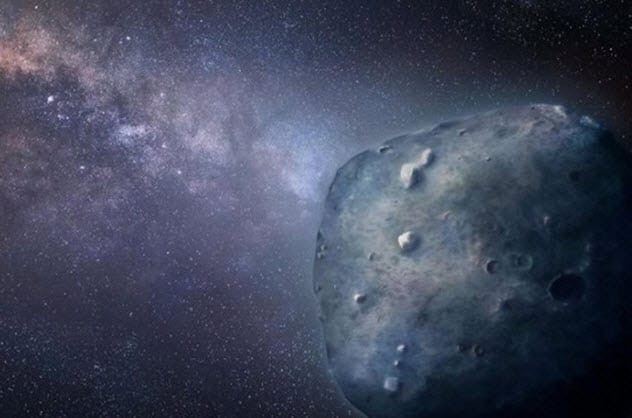
Asteroid 3200 Phaethon is not your average space rock. This anomalous asteroid-comet hybrid follows an eccentric, comet-like orbit that takes it from the Sun’s doorstep to beyond Mars. What makes it even stranger is its composition and color.
Phaethon is slightly lighter than charcoal and appears blue due to being baked at a scorching 815 degrees Celsius (1,500 °F). This intense heat transforms the 5-kilometer-wide (3.1 mi) asteroid into a molten wasteland, turning metal into a gooey substance. Adding to its mystique, Phaethon is believed to be the source of the annual Geminid meteor shower, which dazzles skywatchers every December.
Red Dwarf Neighborhoods Scorched By Apocalyptic Flares
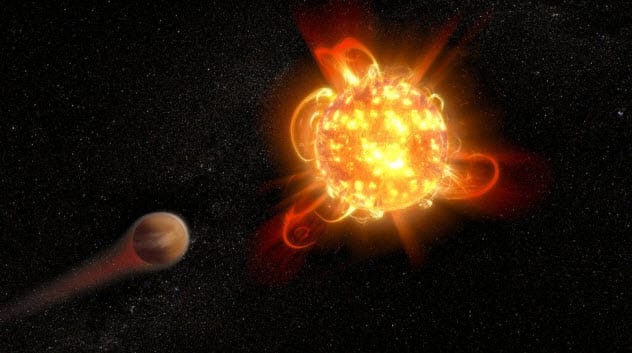
Red dwarfs are the most common type of star in the Milky Way, making up three-quarters of the galaxy’s stellar population. These stars, like our nearest neighbor Proxima Centauri, are much smaller and cooler than our Sun, ranging from 7.5 to 50 percent of its mass. However, don’t let their size fool you. Red dwarfs unleash powerful, UV-heavy solar flares that dwarf anything our Sun can produce.
Younger red dwarfs are the most active, with flares observed by the Hubble Space Telescope being 100 to 1,000 times stronger than those of older stars. One event, known as “Hazflare,” was more energetic than anything our Sun has emitted in a century of observation. These frequent and intense flares could pose significant challenges for any planets orbiting these stars.
Water Clouds . . . On A Failed Star
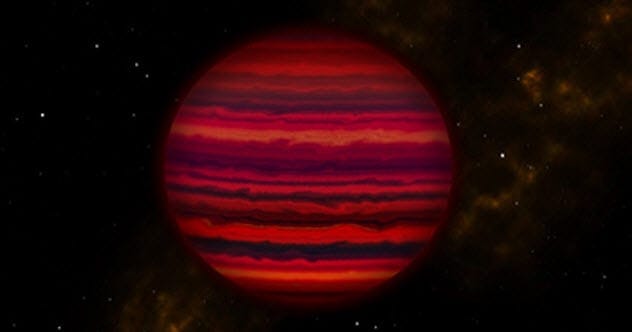
Brown dwarfs are often called “failed stars” because they lack the mass needed to sustain nuclear fusion in their cores. These objects can be incredibly cold, like WISE 0855, the coldest-known object outside our solar system. Located 7.2 light-years away, WISE 0855 has a temperature of -23 degrees Celsius (-10 °F) and is five times more massive than Jupiter.
What makes WISE 0855 truly remarkable is its atmosphere. Spectral analysis has revealed the presence of water vapor and clouds, creating a wet, cloudy world unlike anything else we’ve encountered. The discovery of water clouds on a failed star challenges our understanding of planetary formation and atmospheric conditions.
A Baby Star Enshrouded In The Building Blocks Of Life
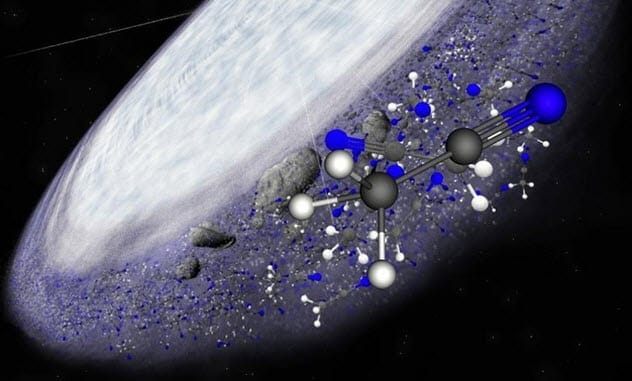
While much of the universe seems inhospitable to life, the discovery of organic molecules around the young star MWC 480 offers a glimmer of hope. Located in Taurus, a star-forming region 455 light-years away, MWC 480 is a young star still surrounded by a protoplanetary ring of dust and gas.
This star shines ten times brighter than our Sun and has twice the mass. Its environment is rich in organics like methyl cyanide, a complex molecule essential for the formation of life. The presence of these building blocks suggests that the conditions necessary for life may be more common than previously thought, increasing the likelihood of finding life elsewhere in the universe.
A Galaxy That Can’t Stop Making Stars

COSMOS-AzTEC-1 is a starburst galaxy located 12.4 billion light-years away. What sets it apart is its incredible rate of star formation, which is about 1,000 times greater than that of the Milky Way. In typical galaxies, star formation is balanced by the outward pressure from supernovae, which prevents runaway collapse.
However, COSMOS-AzTEC-1 is unbalanced and unstable. Gravity is overwhelming the gas, leading to an unstoppable star formation effect in two massive debris clouds located away from the galactic center. This extreme environment is helping astronomers understand the processes that drive star formation in the early universe.
Jupiter’s Infernal Geometric Storms

Jupiter, the largest planet in our solar system, is home to some of the most impressive storms ever observed. The Juno spacecraft has provided unprecedented views of these storms, revealing a series of geometric patterns at the planet’s poles.
At the north pole, Juno discovered a central Earth-size cyclone surrounded by eight smaller storms, each ranging from 4,000 to 4,700 kilometers (2,500–2,900 mi) in diameter and spinning at 354 kilometers per hour (220 mph). The south pole features a similar gigantic cyclone surrounded by five storms up to 6,900 kilometers (4,300 mi) across. These storms are mysteriously stable, neither migrating across the poles nor merging into larger vortexes, challenging our understanding of planetary atmospheres.
Europa’s Chemical Mixer
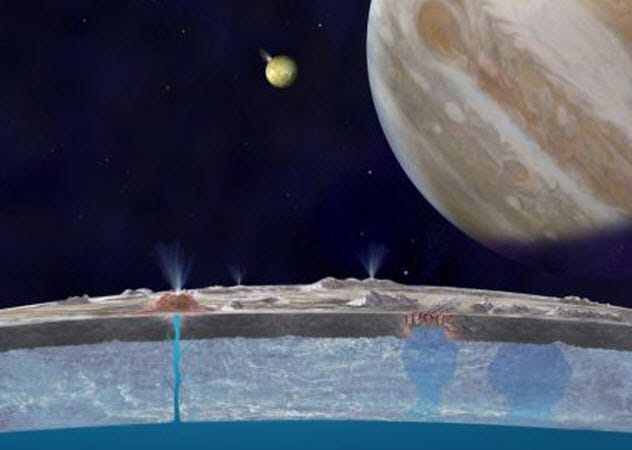
Europa, one of Jupiter’s moons, is considered a prime candidate for finding extraterrestrial life. Beneath its icy crust lies a globe-encompassing ocean 100 kilometers (62 mi) deep. Recent evidence suggests that this ocean exchanges chemicals with the surface and with Jupiter’s volcanic moon Io.
Spectrometry has revealed the presence of epsomite, a magnesium sulfate salt, on Europa’s surface. This salt forms when sulfur, irradiated from Io, mixes with magnesium salts seeping from Europa’s ocean. This chemical exchange makes Europa an even richer and more Earthlike environment than previously believed, increasing the potential for life.
A Brown Dwarf’s Sand And Metal Rain
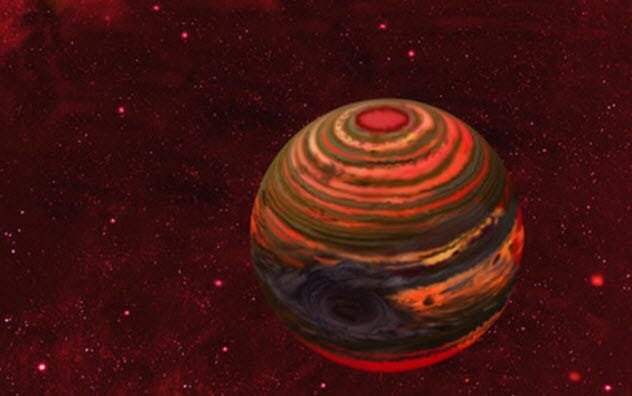
The brown dwarf 2MASS J21392676+0220226, located 47 light-years away, is a unique cosmic object with a rather tedious name. Astronomers have observed its brightness varying by 30 percent in fewer than eight hours, an unprecedented level of variability for a brown dwarf.
The most likely explanation for this phenomenon is an otherworldly storm, a “grander version” of Jupiter’s Great Red Spot. However, this storm is far more deadly, with turbulent clouds made of rock and metal. Silicates and metals condense in the atmosphere and rain down on the failed star, creating a truly extreme and bizarre environment.
Scorching ‘Water Worlds’
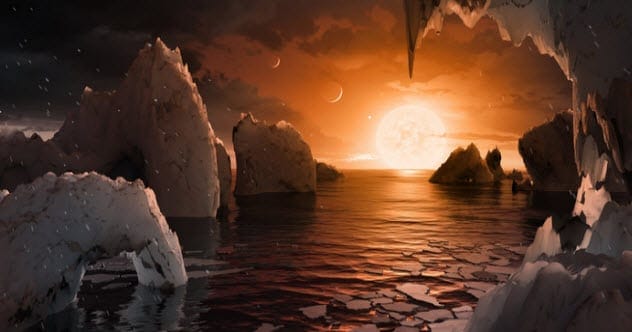
New research suggests that water planets may be incredibly common throughout the universe. Models based on observations of 4,000 known exoplanets indicate that planets with 1.5 times Earth’s radius are rocky, while those with 2.5 times Earth’s radius are likely abundant with water.
However, these “water worlds” are unlike anything we’ve ever seen. They feature layers of vapor surrounding the planet, with liquid oceans below existing at pressures and temperatures reaching up to 538 degrees Celsius (1,000 °F). These planets may be composed of up to 50 percent water, compared to Earth’s relatively small 0.02 percent.
The universe is truly an extreme place, filled with environments that challenge the limits of our imagination. From moons with intense plasma waves to planets with metal rain, the cosmos offers endless opportunities for discovery and wonder. As we continue to explore the universe, who knows what other extreme environments we’ll uncover?
What do you think is the most fascinating cosmic environment? Leave your comment below!










